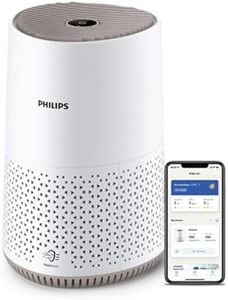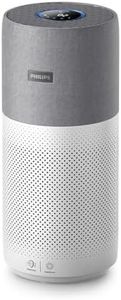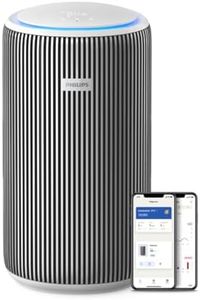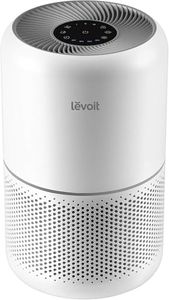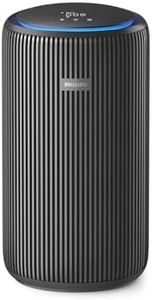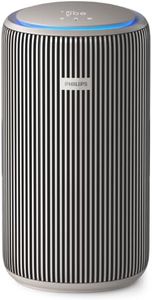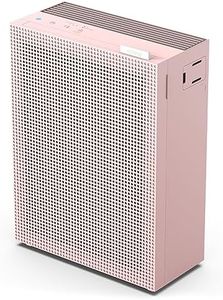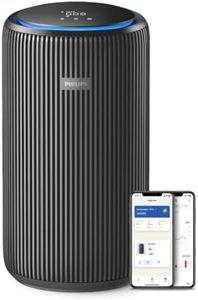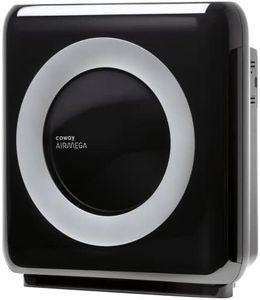We Use CookiesWe use cookies to enhance the security, performance,
functionality and for analytical and promotional activities. By continuing to browse this site you
are agreeing to our privacy policy
10 Best Air Purifiers
From leading brands and best sellers available on the web.Buying Guide for the Best Air Purifiers
When choosing an air purifier, it's important to look beyond just the brand or appearance and focus on the features that really matter for your needs. Air purifiers come in many types, and each is designed to tackle different kinds of pollutants, from dust and allergens to odors and gases. Consider your room size, what you want to remove from the air, and special features like noise level or smart controls. The best air purifier for one person might not be ideal for someone else, so think about your living situation and personal concerns (like allergies, pets, or sensitivity to chemicals) before deciding.Filtration TypeFiltration type refers to how the air purifier cleans the air, with common types including HEPA filters, activated carbon, UV light, and ionizers. This spec is important because the type of filter determines which pollutants the device is effective against; for example, HEPA filters are excellent for dust and pollen, while activated carbon removes odors and chemicals. Some purifiers combine several types of filters to tackle a broader range of contaminants. If your main concern is allergies or asthma, choose one with a true HEPA filter. If you're more worried about smells or smoke, look for added carbon filtration. Consider your priorities—whether it's dust, allergens, pet dander, odors, or smoke—and match the filtration type to those needs.
Clean Air Delivery Rate (CADR)The Clean Air Delivery Rate, or CADR, is a measurement of how quickly and efficiently an air purifier can clean air of particles like dust, pollen, and smoke. The higher the CADR, the faster the air in the room is cleaned. Values are usually divided into low (below 100, for small spaces), medium (100-200, for bedrooms or offices), and high (above 200, for large rooms or open spaces). To pick the right CADR, match the purifier to your room size: a higher CADR is better for bigger rooms, while a lower CADR is fine for smaller spaces. Measuring your room before deciding can help you avoid buying an underpowered or unnecessarily strong unit.
Room CoverageRoom coverage tells you the maximum space an air purifier can handle effectively, usually measured in square feet or meters. This matters because using a purifier with insufficient coverage in a large room will result in less effective cleaning. Room coverage is often grouped as small (under 150 sq ft), medium (150-300 sq ft), and large (above 300 sq ft). To choose the right coverage, measure your room and select a model that matches or slightly exceeds this space, ensuring clean air throughout your entire area.
Noise LevelNoise level describes how loud the air purifier is when running, often given in decibels (dB). This is important if you plan to use the purifier in bedrooms, offices, or nurseries where peace and quiet are needed. Lower noise levels (below 30 dB) are considered very quiet and good for sleep areas, moderate noise (30-50 dB) is suitable for everyday living spaces, while higher levels (above 50 dB) may be noticeable and less comfortable over long periods. Choose based on where you'll place the purifier and your tolerance for background noise.
Maintenance and Filter ReplacementMaintenance involves how often you need to clean or replace filters, and how easy that process is. This matters because filters that are difficult or costly to replace can be inconvenient in the long run, and failing to maintain them can reduce effectiveness. Some units have indicators to alert you when it's time to change filters. If you want a worry-free experience, look for easy-access filters and clear replacement guidelines; for people who don't want regular upkeep, seek models with longer-lasting filters.
Additional FeaturesAdditional features include things like air quality sensors, smart controls, timers, night modes, and display screens. While not always essential, these can improve convenience and allow you to monitor or automate your purifier’s performance. Someone who wants hands-off operation might prefer a model with auto mode and sensors, while others may simply want the basics. Consider which extra features would actually benefit your lifestyle before paying attention to them.


